#Optical Sensor
Explore tagged Tumblr posts
Text
Security Battle Droid

STAR WARS EPISODE I: The Phantom Menace 02:01:08
#Star Wars#Episode I#The Phantom Menace#Naboo#Theed#Battle of Theed#Battle of Naboo#Theed Royal Palace#Throne Room#unidentified sculpture#unidentified battle droid#OOM security battle droid#E-5 blaster rifle#optical sensor#waste energy conduit#receiver assembly casing#sampled movement cycle memory#electromagnetic joint couplings#arm extension piston
3 notes
·
View notes
Link
The fingerprint biometric device is one of the famous and widely practiced biometric systems that are more general in use and available and deployed globally in various work environments such as manufacturing, service, health, education, and many more sectors. Generally, fingerprint biometric systems can be categorized into recognition, security, identification, and control systems. It provides physical access to the company and logical access to internal resources. It utilizes data to provide an extra layer of security at the workplace, which helps to build sophisticated and cumulative productivity in the company’s workforce.
#optical sensor#capacitive sensor#fingerprint sensor#biometric sensor#starlinkindia#starlinkcommunication
0 notes
Text
Optical switch, Electrical connector, Optical sensor, what is an optical sensor
ILD207T Series Dual Channel 70 V 4000 Vrms Phototransistor Optocoupler - SOIC-8
#Optoelectronics#Isolation Components#Optocouplers#ILD207T#Vishay#Optical switch#Electrical connector#Optical sensor#what is an optical sensor#Integrated circuit#Photodetectors#optical switch#Digital optical switch#optical sensors#Electrical board to board connectors#what is an optical switch
1 note
·
View note
Text

HE CAME!!!!!!!!
;)
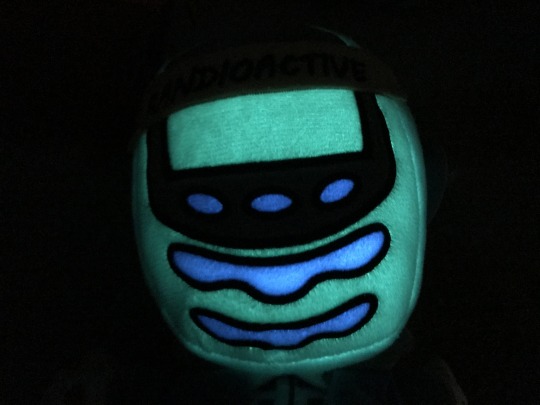
@directdogman
#dialtown#randy jade#im microwaving him#throwing him against the wall#maybe even#against the kitchen floor#glow in the dark is so cool omg#love shining a flashlight directly into his optical sensors ❤️#(im sorry)#it's like an interrogation scene!
123 notes
·
View notes
Text
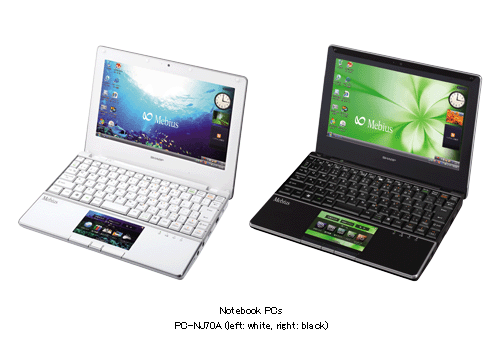
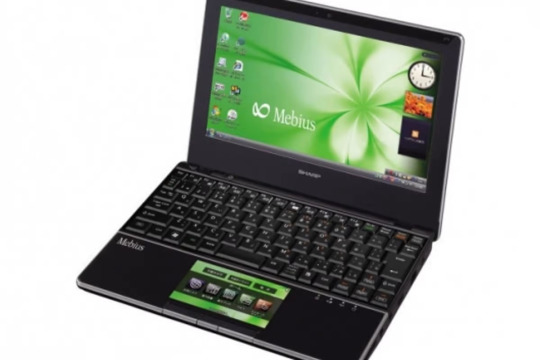

Sharp Releases Notebook PC with Optical Sensor LCD Pad (2009)
#2009#2000s#09#00s#art#black#computer#design#frutiger aero#graphic design#graphics#laptop#pc#photos#sharp optical sensor laptop#sharp#techcore#technology#white
140 notes
·
View notes
Text

Advances in optical micronanofiber-enabled tactile sensors and soft actuators
A perfect combination of fiber optics and micro/nanotechnology, optical micro/nanofiber (MNF) is a new type of micro/nano-waveguide structure developed in recent years. Compared with standard fiber, MNF has a smaller diameter and larger core cladding refractive index contrast, so it offers unique optical properties, including low transmission loss, strong light-field constraint, large evanescent field, small bending radius, small mass, and compatibility with standard fiber. MNF-enabled flexible optoelectronic devices with high sensitivity, small size, and low power consumption have been widely used in the fields of tactile sensors and soft actuators. To date, flexible MNF sensors, also known as "optical skin," have been used to monitor pressure, temperature, hardness, pulse and breathing with high sensitivity, fast response, and anti-electromagnetic interference.
Read more.
17 notes
·
View notes
Text
Enough discourse, I wanna post about headcanons
The Vees are a polycule to me, but in a way that I can't even explain without an entire slowburn fanfic (stay tuned. I'm a slow writer). But I will try.
Velvette:
I do adhere to the lesbian Velvette headcanon. She's dating Vox and still occasionally joins Valentino for a threesome with him. When she first joined the Vees, Velvette used to identify as bisexual (and still loves the bi flag colors the most) and all three of them used to date, before Velvette realized that she's a lesbian.
She and Vox are still dating, and they have an open relationship.
Vox:
Vox's response to Velvette coming out was, "So you're breaking up with Val?" Yes, his pronouns are he/him. No, he's not a man. He'd long shed the fleshy confines of humanity and gender along with it.
Vox is aspec, agender, autistic. To me. He's sex favorable of the 'I want to do it for my partner's enjoyment' flavor. Watching from cameras brings him just as much enjoyment, and he watches everything and everyone, living vicariously, a voyer through the screen. As a result of that, he's so so touched starved, but his sense of feeling is muted (the consequences of betraying flesh in favor of the machine). Soft touches to his synthetic skin don't really register, his sense of feeling restricted to mostly pressure and pain, so he's become a bit of a masochist in response because that's something physical.
Valentino:
He just likes sex. He chases pleasure in any form he can find, dopamine rushes from numerous drugs, orgasmic release, the rush of power from crushing someone underfoot. Anything and everything, he'll try it all. And none of it is really enough, so he'll never stop chasing more.
Valentino doesn't consider his relationship with Vox romantic, even if Vox totally does. They're friends, sure, business partners, absolutely, and fuckbuddies wherever Val is in the mood for it. But romance isn't Val's thing. That's hard work, and Val saves romancing for potential new hires he wants to sign a contract with. What Vox and he have is also written down on a contract, joining their businesses together too closely to be parted without blood, but it's not the same. Not to Val. So, he wouldn't call Vox his boyfriend, but he also wouldn't correct anyone who said they were. Vox is someone he can let his guard down with, one of the few people who would never want to get out of the contract their names are signed on. They work well together. That's better than any romance you can get in Hell, Val thinks.
Val and Velvette are catty besties. Pan/Lesbian solidarity and hostility all in one.
#the vees#hazbin hotel vees#hazbin hotel velvette#hazbin hotel vox#hazbin hotel valentino#okay i hate typing official tag. we're done here#not done with rambling in the tags tho#ace Vox vs Alastor having wildly different experiences with their sexuality so that even tho they are the same sexuality‚#that only drives them further apart. is something that can be so meaningful#to me!!#also human Vox in my own little headcanon world had So Many body issues that becoming a TV was an improvement to him#but it's hell so he's still disconnected from his own body by the fact that his skin isn't flesh and doesn't feel#the nerves he came to hate have burned away and the fibre optics glowing inside of him are cold‚ unfeeling light#and now he would rather feel pain than feel nothing#he's rewired his sensors so that pain becomes pleasure - or as close to such that he can feel#velvette is the newest vee of course and she was dropped right in to Vox and Val's situationship#and she quickly found out that Vox doesn't just like watching - he also likes being watched. it was not shocking discovery#he likes her watching Val and him fuck‚ he likes Val watching her fuck him.#and he loves cuddling at the end. she loves it too. they can be so soft. i can make them be soft >:3#so import to me that their relationships are so fucking toxic tho. they're soft and they're horrible <3#Ace Vox
33 notes
·
View notes
Text
my schizophrenia likely effects my identity in many ways but i still think bein a robot is cool as hell. me and my damn coolant and chassis plates
#tgis is a robotkin post okays ?#well. not specifically robot in the traditional sense#more like semi-human. human but metal-plated chassis replacing my skin and tubing replacing blood vessels and coolant-#-to keep the system from overheating.#optical and auditory sensors and transmitters and wires and chips to keep everything running smoothly#okays ?
2 notes
·
View notes
Text
if bungie are really having so much trouble making new ritual armour sets every year they should just either start adding in armour from d1 (yeah they'd have to do retopo and retexturing and the like but y'know. no need to worry about design and concepting)
or go back to the method they used for character asset creation in D1 (modular construction, assets being made of "Bits" and "Bunches of Bits" made in their mashup and gear manager programs (plugins?)) which according to their 2014 "Building Customizable Characters for Bungie's Destiny" GDC talk allowed them to make "a new piece of helmet content in about 20 minutes"
(yes using the mashup/gm bits and bobs asset creation method would result in a lot of reused and very similar assets with potentially less aesthetic variety but they could probably deal with at least some of that by having a team organise assets by similarity and picking the best one from each group or something)
#random robot rambles#destiny#destiny 2#also going back to the mu/gm bits and bobs over core base model method would probably help give the classes back a bit of their identity#and character that aren't just basic/generic ''warlocks have long coattails/robes and a bond''#''titans have heavy armour big spauldrons and a mark''#hunters have a cloak#y'know. titans having backswept helms and up-forward angled cuisses.#hunters having rebreather/gas masks and/or prominent optical/sensor packages or snow-goggle esque visors#and kind of ''vest-like''(?) cuirasses#warlock helmets looking more ''hooded''#(I know these weren't hard and fast rules — more trends than rules — but they were largely true for the most part)#(hopefully this doesn't come across wrong)
3 notes
·
View notes
Note
Where could i possibly find a template to the inviane flag(if it has one)
I don't think there is one, but I've seen people use this one often

And I use this one

4 notes
·
View notes
Text
[ Motors Winding Down ]

STAR WARS EPISODE I: The Phantom Menace 02:03:35
#Star Wars#Episode I#The Phantom Menace#Naboo#Great Grass Plains#Battle of Naboo#Battle of the Great Grass Plains#Jar Jar Binks#unidentified battle droid#B1 infantry battle droid#Gallo Mountains#optical sensor#vocoder#power cell#waste energy conduit#haillu#E-5 blaster rifle#signal boost and power augmentation backpack#arm extension piston#specialized movement processor#sample movement cycle memory#transmitter boost antenna#signal reception boost antenna#Captain Roos Tarpals
1 note
·
View note
Text
This is a great breakdown of phone cameras and worth a read if you do most of your photography with a phone.
Phone cameras are comparable to or better than many point-and-shoot digital cameras (especially older generation cameras, and this has been the case for several years now). But there is no such thing as a "pro" phone camera, just like there's no such thing as a "pro" point-and-shoot.
You can get really great photos and they can absolutely serve your needs. It's a fantastic solution if you're not in a position to carry extra gear with you.
But they are not "pro".
They can also be a perfectly acceptable tool for photography as an art form. You use the tools and explore and maximise their capabilities as you feel driven to. You certainly limit yourself in major ways with a camera phone, but that's part of the art. ALL photography is bound by the limits of your tool, and the entire point is to work within those and push your craft to see what you can do. So you can use the camera phone AS a pro (i.e. someone who understands the tool and principles of photography), but you have to understand the tool for that.
If you want a pro camera though, get a real camera.
Also, you need to identify the type of photography you like or want to do in order to choose the right camera.
I do a LOT of handheld, low-light photography w/o flash (museums, early or late hiking, etc.) so the sacrifice of low light quality in these cameras is the wrong decision, to me. But I also have a real camera which specifically caters to what I do. You just need to choose the tool or work within the bounds of what you have.
Smartphone cameras are NOT getting worse. (See below for phone photography tips)
I've now seen 3 pro photographers reviewing the iPhone 16 and complaining the cameras are "worse" and blaming Apple for not including revolutionary new camera technology.
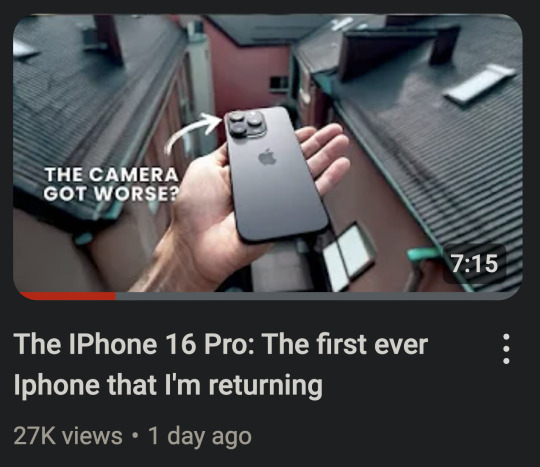

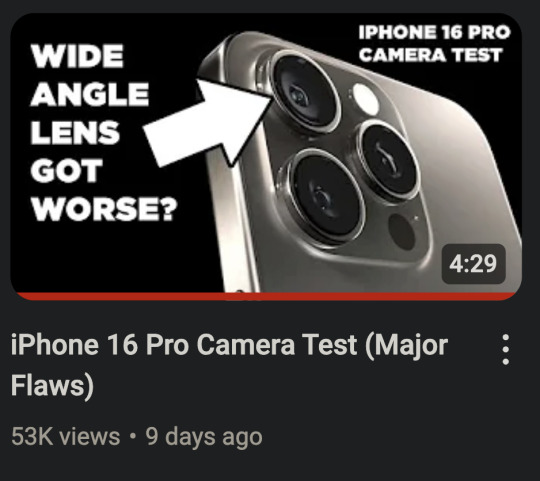
And I suppose this is partly Apple's fault. Their marketing and hype machine always goes overboard. But also, that's just how marketing works. Samsung has a "200 megapixel" sensor and Sony has a "Zeiss" lens. And I think it is unrealistic to expect smartphone companies to say "This product has entered the iterative phase and each new model will only be marginally improved over the last one."
Smartphones (from any brand) have become an appliance. You don't buy a new model of microwave every year. And you don't expect every new model of microwave to have new revolutionary technology. And that is pretty much the expectation you should have with most computer hardware from here on out.
And in some ways, that is a good thing. That means the design of the phone has pretty much been perfected and it will last you a long time if you take care of it. You will not be left behind and your phone will be able to handle any new software for most of its lifespan.
So, is Apple getting lazy or is there a reason their hardware is stagnating?
It seems that neither money nor marketing can change the laws of physics.
They cannot make transistors much smaller. Phones and computers are about as fast as current hardware designs can make them (unless there is a shocking scientific breakthrough). From here on out, heavy compute tasks that are beyond your phone or computer will be done in the cloud on giant computer clusters. Thankfully computers and phones seem to be plenty fast for the majority of tasks we ask of them.
I remember Katrina telling me her new computer didn't seem any faster. And I explained the computing tasks she does regularly were not really affected by the increased power and speed of her new computer. If something took 0.1 seconds before and now it takes 0.05 seconds, that is twice as fast. An increase in speed that looks fantastic in advertisements. But it is hard for our brains to perceive. She just didn't do anything on her computer that took it long enough for her to notice. But having a faster and more powerful computer/phone will increase its lifespan and resale value, so it is still prudent to get the best things you can afford at time of purchase.
And I'm afraid smartphone cameras are hitting their own hardware limitations. They can't make the sensors much larger to get better depth of field and low light performance. And cramming in more megapixels doesn't actually add much more detail, if any.
It's physics.
Again.
You cannot get any more performance out of a small plastic lens. Why do you think pro photographers haul around 10 pound lenses still?
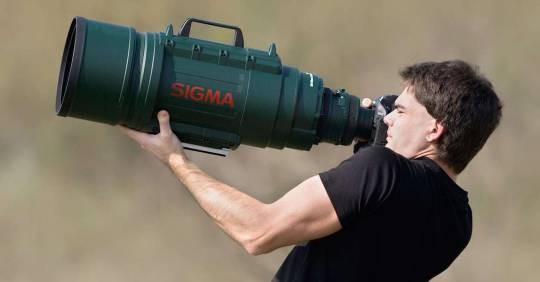
There is a formula for detail that never seems to be explained in any camera marketing.
Here is the simplified version...
Detail = Sensor x Lens
Let's say 1 is perfection. You have a sensor that performs at 0.5 and a lens that performs at 0.2.
The total detail will be 0.1.
But in the new model you increase the performance of the sensor to 0.8. WOW! That's so close to 1!
The total detail will be... 0.16.
Now let's imagine we've discovered a magic, physics-defying tiny plastic lens that performs at 0.8 as well.
The total detail jumps to 0.64!
But we all get sucked into a wormhole because we violated the laws of the universe.
Even if you were to design a near perfect (perfect is impossible) sensor that scores 0.99.
Without that magic plastic lens... 0.198
This is why I put Samsung's "200 megapixel" sensors in quotes. Because when paired with the same tiny plastic lens, there isn't much improvement. And that's why a 12 megapixel DSLR from 10 years ago with a giant honking lens can still capture more detail.
Most of the quality from smartphone cameras comes from the computational software processing. Phones actually take many photos at once and combine them to get you a decent image.

While that is still improving a little bit each generation, those improvements are stagnating as well. Until image processing can do a better job of inventing more detail realistically, smartphones are going to have to obey the laws of physics.
So... why are photographers saying the iPhone cameras are worse?
First, the ultra wide angle lens looks softer in low light.
And if you zoom between 1x and 5x, the images look less detailed.
But neither of those things make the cameras *worse*. In fact, the cameras are better for the most part. It's just that Apple decided to compromise on one aspect to improve another. Probably due to market research telling them most people prioritize certain things over others when taking photos.
They increased the resolution of the ultra wide angle sensor to match the detail of the main sensor, but that seems to have lowered the low light performance of the ultra wide. So in good light, you will see an improvement in sharpness. But they could not increase the sensor size to compensate and smaller pixels can have trouble with dim conditions. They probably discovered that people mostly use that lens in good light and they would appreciate the bump in detail more.
But pro photographers often photograph in more challenging lighting conditions because you can capture a more artistic shot. I don't think I could have gotten this shot on a smartphone.

But photo normies are just taking pics of their kids doing weird kid shit.

They aren't really trying to push the limits of their ultra wide angle lenses.
And they increased the zoom of the telephoto lens to 5x from 3x because most people never used the 3x. So images at 5x look great now, but unfortunately if you use anything between 1x and 5x, your image will be *digitally* zoomed. Which is never as good as optical zoom. They basically crop the photo, zoom in, and add sharpening.
So they prioritized people having longer reach and more zoom at the expense of that middle zoom range. Every camera system makes tradeoffs and compromises.
And I hate that I always feel like I am defending Apple, because they do have misleading and dishonest marketing regarding a lot of aspects of their tech. But hating on Apple gets more clicks so content creators also make misleading and dishonest claims.
And so we are just surrounded in a circle of hyperbole from all sides.
Now, if you know these limitations, you can change your approach to photographing stuff to keep them from being an issue. You can reap the benefits without dealing with the new compromises.
Here are some tips to help owners of the new iPhone, but also everyone else too.
Smartphone Photography Tips
Whenever possible, try to use the main 1x camera at only 1x zoom. This has the largest sensor with the most detail and works best in the lowest light. Only use the ultra wide or telephoto if you cannot get the photo otherwise. If you aren't sure you have enough light for ultra wide, take the photo, and then as a safety, take two photos with the main camera side by side and stitch them later with a pano app.
"Zoom with your feet" and don't use "in-between" zooms. Let's say your lenses do 0.5x, 1x, and 5x zoom. Even though you have the option to use other zooms, like 2x or 3x, that is going to compromise your picture quality. It is essentially going to crop your photo and enlarge it, which causes a loss of detail. If fact, if you use 4.5x instead of 5x, your picture will probably look like trash. You are always going to get better results if you can move closer or step back so that you are using the native focal length of your chosen lens. For example, let's say you are taking a photo and you judge the best framing to be at 4x. But you still have 10 feet of space behind you. If you back up and then zoom in to 5x, the phone will switch to that lens and you will get a much clearer picture.
Rule of thumb...
1 to 3x... try to move closer.
4 to 5x... try to move back.
If you hit a wall and end up at 4.5x, you might see if you have a panorama mode and try that instead. Switch to your 5x and do the pano. Or you can take two photos and then stitch them together with software later on. (Stitching panos with an app later will give better quality than pano mode, especially in low light.)
Low light needs stability. Get some sort of stabilizing device for low light photos. Either a phone case that lets you stand up the phone on its own or a mini tripod.
This thing folds to the size of a credit card.
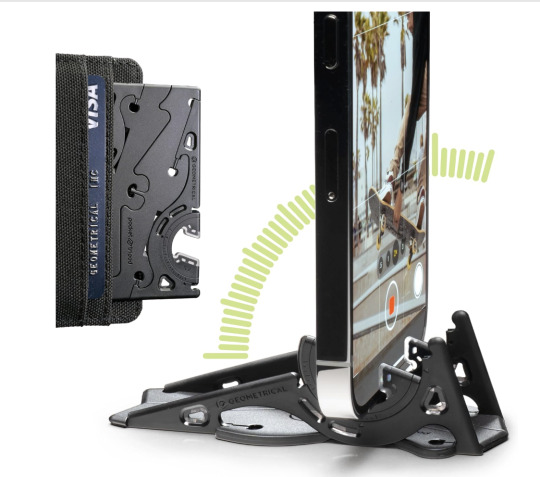
Your phone will detect when it is stable and not being handheld. It will then automatically extend its shutter speed allowing it to drink in more light and give you a better picture.
Tripods are photography magic and will improve your low light photos quite a bit. Motion blur of moving subjects can still be an issue, but photos of a cityscape or landscape will look great.
For selfies, shoot a little bit wide and then crop in. This goes a little contrary to my earlier advice saying cropping lowers detail, but this is specifically for shooting a face. The 0.5x and 1x lenses on smartphone cameras are fairly wide angle. This can cause unflattering proportions with human faces. Wide angle lenses exaggerate distance. Near things look very near and far things look very far. To a wide angle lens, the tip of your nose looks like it is super close but your ears seem like they are a mile away. And that's why you may look a bit "alien" in your selfies.
People's natural instinct is to "fill the frame" with a face. The outer edges of a wide angle lens are more distorted than the very center. So try to keep faces away from the edges of the frame.
And one other trick you can do for selfies and pictures of faces is step back a few feet. Sometimes this is hard, especially with selfies, as your arm is only so long... but if you can take your face photos from just a little bit farther back, you will almost entirely eliminate unflattering distortion. In some cases, just stretching out your arm as far as it will go is enough.
Then you just crop the image with the framing you originally wanted, and your facial proportions will look great.
An example...

Here the distortion is bad because I am not in the center and the lens is too close to my face. The lens thinks my nose is really close and my ears are in Canada.

But when the lens is farther back the edge distortion is less prevalent and my nose and ears (relative to the lens) seem roughly the same distance away. So my proportions look great, but I don't quite have the framing I want.
But with a little cropping...


For social media there is still plenty of resolution to crop in. Cropping isn't bad, it's just always better to use it as a last resort or in a special circumstance like this. I get roughly the same framing as in my wide angle shot, but I don't look like I'm behind a door's peephole trying to sell you the Good News.
I wish they made a "mini" selfie stick that only extended a foot or so. With the main camera that is usually all people need to undo any wide angle issues. I have one of those mini tripods and that works well, but there is no activation button so I have to do a timer. Mirrors work great to help you get some selfie distance.
In any case, all cameras have limitations and compromises. Clickbait titles saying something is WORSE THAN THE OLD ONE are frustrating and wrong.
And people upgrading phones every year are silly. All current name brand smartphones have promised at least 5 years of software updates. I think Google and Samsung are offering 7 years on some models. And Apple has always just let you use your phone until it literally will not work with new software. Which has worked out to 8 years in some cases (with a battery swap).
Phones are now appliances. For now, hardware will improve 10 to 15% from generation to generation until physics breaks. So if you want a 50% improvement, wait 5 years and you'll think your new phone is awesome. If you upgrade every year, it is going to be difficult to see the change.
I hope to be starting a little course on smartphone photography in the near future. All modern phones are capable of taking amazing pictures. And as long as you understand their limitations you can mitigate or avoid them. And that is what I plan to teach.
#photography#bound by physics is right#lens size and sensor size are inherently tied to real life physics and there is a hard limit on how small you can make them#even if you continued to miniaturize everything else#your sensors and lenses are capped and cannot physically get smaller without sacrificing image quality#anyway part of the art is to pull things off even with substandard (phone) cameras#commentary#i wouldn't do an iphone tho lol. joke phone. 😂#more people need to understand zoom on phone cameras. if you're pinching in to 'zoom' you're probably failing#most of those are digital zooms which are the equivalent of cropping and enlarging the original image#it's a fake zoom and frankly they shouldn't exist#the only zoom you want is an optical zoom. it's not a zoom if it's not optical
684 notes
·
View notes
Text
insta360 X3 Action Camera, 1/2" Sensor, 5.7K 360 Capture, Optical Zoom 3X, 72 MP 360 Photo, 4K Single Lens Mode, Black
Price: (as of – Details) Insta360 X3, Pocket 360 Action Cam, The next gen of the world’s best-selling 360 action camera. With 360° capture, action-ready hardware and AI-powered software, Insta360 X3 is the ultimate pocket camera. X3 makes it easy—and most importantly, fun—to capture and share your life. Fun, creative content. Creators, adventurers and athletes can now create fun and…

View On WordPress
#5.7K#Action#Black#Camera#Capture#insta360#Lens#Mode#next gen store#Optical#Photo#Sensor#Single#Zoom
0 notes
Text
Fiber Optic Sensor Market Size with Recent Trends & Demand

Leading Forces in the Fiber Optic Sensor Market: Forecasts and Key Player Insights Through 2032
This Global Fiber Optic Sensor research report offers a comprehensive overview of the market, combining both qualitative and quantitative analyses. The qualitative analysis explores market dynamics such as growth drivers, challenges, and constraints, providing deep insights into the market's present and future potential. Meanwhile, the quantitative analysis presents historical and forecast data for key market segments, offering detailed statistical insights.
According to Straits Research, the global Fiber Optic Sensor market size was valued at USD 3.43 billion in 2023. It is projected to reach from USD 3.75 billion in 2024 to USD 7.71 billion by 2032, growing at a CAGR of 9.43% during the forecast period (2024–2032).
Who are the leading companies (Marketing heads, regional heads) in the Fiber Optic Sensor
ABB
Fujikura Ltd
Furukawa Electric Co., Ltd
Halliburton
Honeywell International Inc.
Neubrex Co., Ltd
NTT, Inc.
Omron Corporation
Oki Electric Industry Co., Ltd
Panasonic Corporation
Schlumberger Limited
Autonics Corporation
Siemens
Sumitomo Electric Industries, Ltd
Baumer
Yokogawa Electric Corporation
Asahi Kasei Corporation
Weatherford International plc
Keyence Corporation
Micro-Epsilon
Takenaka Electronic Industrial Co. Ltd
Tokyo Measuring Instruments Laboratory Co, Ltd
SWCC Showa Holdings Co. Ltd
We offer revenue share insights for the Fiber Optic Sensor Market, covering both publicly listed and privately held companies.
The report integrates comprehensive quantitative and qualitative analyses, offering a complete overview of the Fiber Optic Sensor. It spans from a macro-level examination of overall market size, industry chain, and market dynamics, to detailed micro-level insights into segment markets by type, application, and region. This approach provides a holistic view and deep understanding of the market, covering all critical aspects. Regarding the competitive landscape, the report highlights industry players, including market share, concentration ratios, and detailed profiles of leading companies. This enables readers to better understand their competitors and gain deeper insights into the competitive environment. Additionally, the report addresses key factors such as mergers and acquisitions, emerging market trends, the impact of COVID-19, and regional conflicts. In summary, this report is essential reading for industry players, investors, researchers, consultants, business strategists, and anyone with a stake or interest in entering the market.
Get Free Request Sample Report @ https://straitsresearch.com/report/fiber-optic-sensor-market/request-sample
The report integrates comprehensive quantitative and qualitative analyses, offering a complete overview of the Fiber Optic Sensor markets. It spans from a macro-level examination of overall market size, industry chain, and market dynamics, to detailed micro-level insights into segment markets by type, application, and region. This approach provides a holistic view and deep understanding of the market, covering all critical aspects. Regarding the competitive landscape, the report highlights industry players, including market share, concentration ratios, and detailed profiles of leading companies. This enables readers to better understand their competitors and gain deeper insights into the competitive environment. Additionally, the report addresses key factors such as mergers and acquisitions, emerging market trends, the impact of COVID-19, and regional conflicts. In summary, this report is essential reading for industry players, investors, researchers, consultants, business strategists, and anyone with a stake or interest in entering the market.
Global Fiber Optic Sensor Market: Segmentation
By Component
Transmitters
Receivers
Optical Amplifiers
Fiber Optic Cable
By Type
Extrinsic/Hybrid Fiber Optic Sensors
Bragg Grating Sensors
Extrinsic Fabry Perot Fiber Sensors
Intrinsic Fiber Optic Sensors
Distributed Sensors
Interferometric Sensors
Intrinsic Fabry Perot Fiber Sensors
Microbend Sensors
By Applications
Chemical/ BioDetection
Induction Heating
Mode Coupling
Raman Scattering
Rayleigh Scattering
By Material
Glass Fiber Optic Sensors
Plastic Fiber Optic Sensors
By Industrial Verticals
Defense
Energy and Power
Medical
Transportation
Industrial
Explore detailed Segmentation from here: @ https://straitsresearch.com/report/fiber-optic-sensor-market/segmentation
The report forecasts revenue growth at all geographic levels and provides an in-depth analysis of the latest industry trends and development patterns from 2022 to 2030 in each of the segments and sub-segments. Some of the major geographies included in the market are given below:
North America (U.S., Canada)
Europe (U.K., Germany, France, Italy)
Asia Pacific (China, India, Japan, Singapore, Malaysia)
Latin America (Brazil, Mexico)
Middle East & Africa
This Report is available for purchase on Buy Fiber Optic Sensor Market Report
Key Highlights
To explain Fiber Optic Sensor the following: introduction, product type and application, market overview, market analysis by countries, market opportunities, market risk, and market driving forces
The purpose of this study is to examine the manufacturers of Fiber Optic Sensor, including profile, primary business, news, sales and price, revenue, and market share.
To provide an overview of the competitive landscape among the leading manufacturers in the world, including sales, revenue, and market share of Fiber Optic Sensor percent
To illustrate the market subdivided by kind and application, complete with sales, price, revenue, market share, and growth rate broken down by type and application
To conduct an analysis of the main regions by manufacturers, categories, and applications, covering regions such as North America, Europe, Asia Pacific, the Middle East, and South America, with sales, revenue, and market share segmented by manufacturers, types, and applications.
To investigate the production costs, essential raw materials, production method, etc.
Buy Now @ https://straitsresearch.com/buy-now/fiber-optic-sensor-market
About Us:
StraitsResearch.com is a leading research and intelligence organization, specializing in research, analytics, and advisory services along with providing business insights & research reports.
Contact Us:
Email: [email protected]
Address: 825 3rd Avenue, New York, NY, USA, 10022
Tel: +1 6464807505, +44 203 318 2846
#Fiber Optic Sensor#Fiber Optic Sensor Industry#Fiber Optic Sensor Share#Fiber Optic Sensor Size#Fiber Optic Sensor Trends#Fiber Optic Sensor Regional Analysis#Fiber Optic Sensor Growth Rate
0 notes
Text
https://www.maximizemarketresearch.com/market-report/optical-sensors-market/2903/
The Optical Sensors Market size was valued at USD 3.07 Billion in 2023 and the total Optical Sensors revenue is expected to grow at a CAGR of 15.2 % from 2024 to 2030, reaching nearly USD 8.27 Billion by 2030.
0 notes
Text

Researchers create an optical lens that senses gas
A research team from the University of Jena has developed a small optical lens, only a few millimeters in size, whose refractive behavior changes in the presence of gas. As reported by the researchers in the journal Nature Communications, this "intelligent" behavior of the micro-lens is enabled by the hybrid glass material from which it is made. The molecular structure of the lens consists of a three-dimensional lattice with cavities that can accommodate gas molecules, thereby affecting the optical properties of the material. Multi-responsive glasses "With support from the Carl Zeiss Foundation, we are developing so-called multi-responsive materials," explains Lothar Wondraczek, Professor of Glass Chemistry at the University of Jena.
Read more.
13 notes
·
View notes